No one enjoys ordering, administering, or taking a drug or alcohol screen. However, there are specific circumstances in which these tests can protect businesses, supervisors, and employees from considerable risk. Here are the top five reasons for drug testing in the workplace.
Drug testing policies equip businesses, supervisors, and employees to make smart hiring decisions, ensure the safety of all staff and reduce workplace injuries. If you’re wondering, “When should substance abuse tests be administered?,” we’ve outlined these top five reasons for drug testing in the workplace:

.png?width=500&height=500&name=Blue%20and%20White%20Classic%20Shield%20Financial%20with%20Star%20Logo%20Design%20(1).png)

